Heard something that sounds not quite right about reusable nappies? Read this blog where we BUST the most frequently asked cloth nappy myths.
Myth: you need to use a special detergent on reusable nappies
False! You can use either powder or liquid detergent on reusable nappies. However, we believe powder detergent is better at stain-removing because it contains a safe level of stain-removing (bleaching) ingredient called sodium per-carbonate.
Sodium per-carbonate is the stain remover used in nappy sanitisers and generic stain removers. However, it's concentration in these is much higher, making them risky to use on cloth nappies. we find powder detergent generally has a much lower concentration, and is therefore safe to use on your cloth nappies.
Sodium per-carbonate is activated by moisture, so it cannot be added to a liquid detergent.
So, while you can use any detergent, it is best to use powder because it has a safe level of sodium per-carbonate.
Myth: You must use non-bio detergent
False! It is safe to use non-bio or bio detergent to wash cloth nappies because it is not the enzymes in biological detergent which causes any reactions; it is more likely the perfume in the detergent that causes skin reactions.
Interestingly, this myth stems from outdated NHS advise "that only non-bio should be used to clean baby garments/nappies". This advice was overturned after a collaboration by The Nappy Science Gang (of which we were a part of); a citizen-based science project all about nappy laundering. The project asked the NHS why they advised only non-bio use for babies and what evidence they had to support this claim, and they came back with none. The NHS didn't even know where the advice originated from or what it was being advised!
Myth: You'll need to buy specialist (and more expensive) clothing to fit over reusable nappies as they are bulkier.
Not true! You need to consider/bear in mind when clothes shopping that you'll need to accomodate the nappy, so slim cuts are not suitable. So for you cloth-bum-baby skinny jeans are definitely out, but harem-style pants or regular leggings are perfect. We assure you'll be able to find suitable clothing in your local supermarket and high street brands.
Myth: Reusable nappies are challenging to wash
False! Modern cloth nappies have come a long way since the days of soaking giant cauldrons on the stovetop like your granny remembers. The truth is modern washing machines, paired with regular detergents are highly effective and clean nappies perfectly without much faff at all.
Washing at 60 degrees is sufficient to sanitise; you simply pop nappies in the washing machine with the right amount of detergent and push the button for cotton wash. Once cleaned, hang them on the line or inside on a clothes horse. We can assure you there will NOT be hours of scrubbing on a wash board or whatever horror stories your non-cloth-nappy friends and relatives try to convince you in their scare-tactics!
Also, we hate to be the bearer of bad news, but even babies in disposable nappies go through a LOT of clothes washing! Think sick, sloppy burps, feeding messes and the dreaded poonamis... This list goes on. An increase in washing is simply what comes hand in hand with having a baby.
Myth: Nappies will make babies hotter than if they wore disposables
False! Reusable nappies are made from a more breathable fabric than disposable nappies, making them actually cooler for babies to wear. Even the plastic-lined PUL allows tiny air molecules through but traps the larger liquid molecules. Can you imagine how hot you'd get wearing a plastic pair of pants...!? We're sure you'd much sooner grab a pair of cotton undies any day!
Myth: Reusable nappies give babies nappy rash
False! No evidence supports a more significant occurrence of nappy rash in babies wearing reusable nappies.
Most babies will get a nappy rash at some stage, it is commonly caused by skin irritation, possibly from wetness, sensitivity or infection. Babies skin is a lot more sensitive than mature adult skin, so it is more easily irritated.
Best practice is to change baby regularly, gently (no scrubbing) but thoroughly clean the nappy area (including upper thighs and lowder abdomen) when changing and pat dry.







